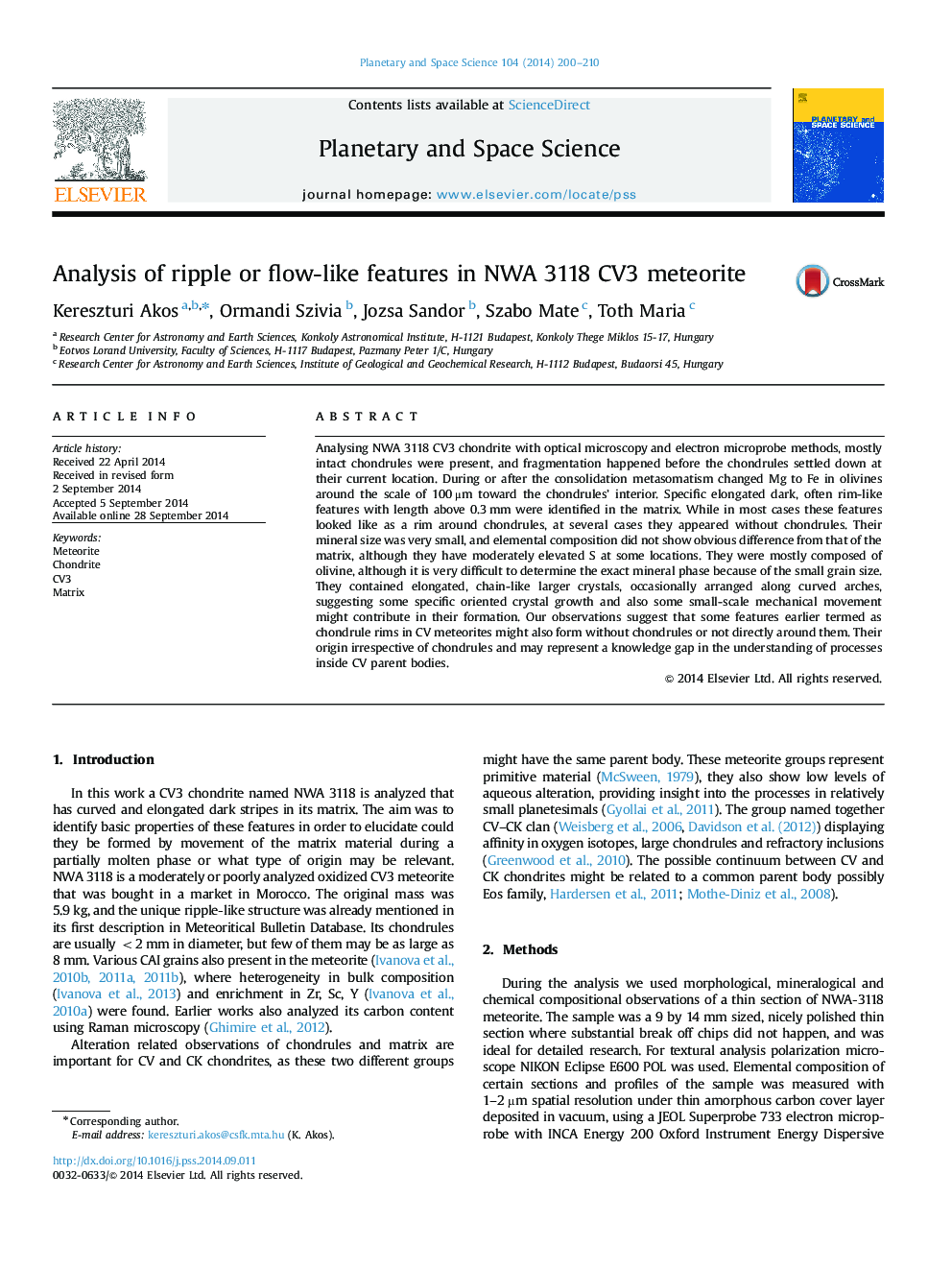| Article ID | Journal | Published Year | Pages | File Type |
|---|---|---|---|---|
| 1781016 | Planetary and Space Science | 2014 | 11 Pages |
Abstract
Analysing NWA 3118 CV3 chondrite with optical microscopy and electron microprobe methods, mostly intact chondrules were present, and fragmentation happened before the chondrules settled down at their current location. During or after the consolidation metasomatism changed Mg to Fe in olivines around the scale of 100 μm toward the chondrules' interior. Specific elongated dark, often rim-like features with length above 0.3 mm were identified in the matrix. While in most cases these features looked like as a rim around chondrules, at several cases they appeared without chondrules. Their mineral size was very small, and elemental composition did not show obvious difference from that of the matrix, although they have moderately elevated S at some locations. They were mostly composed of olivine, although it is very difficult to determine the exact mineral phase because of the small grain size. They contained elongated, chain-like larger crystals, occasionally arranged along curved arches, suggesting some specific oriented crystal growth and also some small-scale mechanical movement might contribute in their formation. Our observations suggest that some features earlier termed as chondrule rims in CV meteorites might also form without chondrules or not directly around them. Their origin irrespective of chondrules and may represent a knowledge gap in the understanding of processes inside CV parent bodies.
Related Topics
Physical Sciences and Engineering
Earth and Planetary Sciences
Geophysics
Authors
Kereszturi Akos, Ormandi Szivia, Jozsa Sandor, Szabo Mate, Toth Maria,
